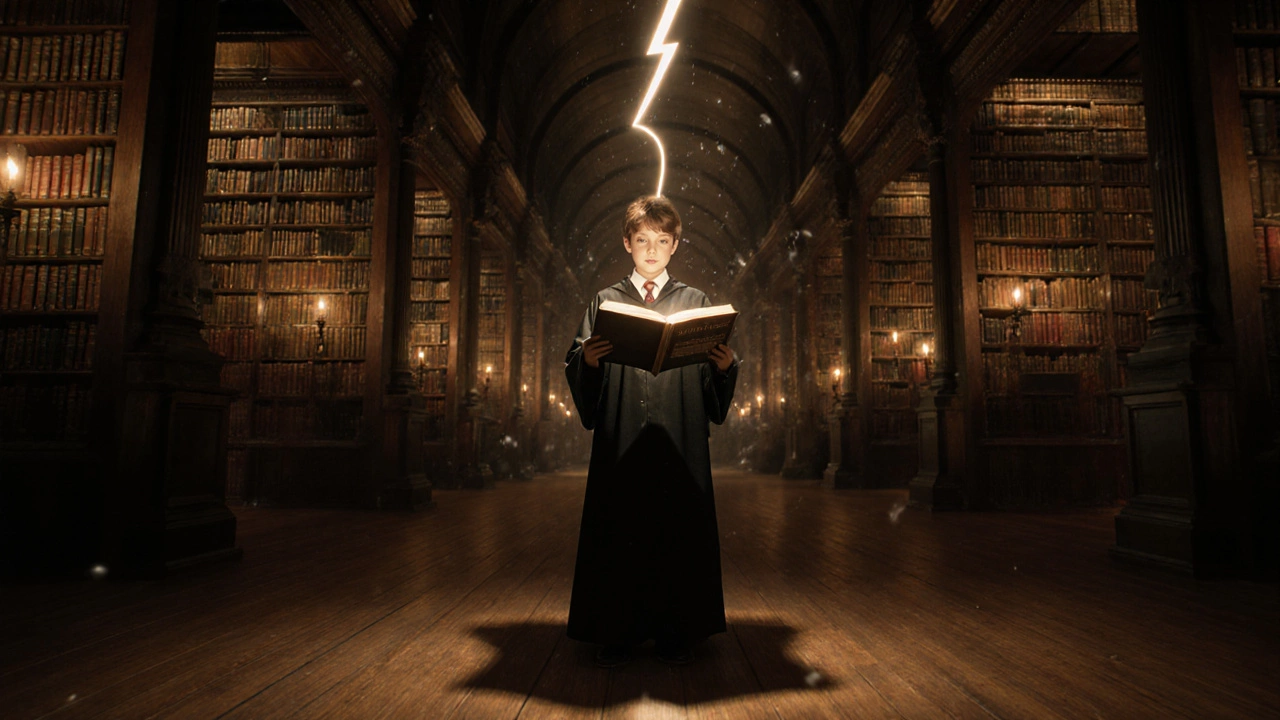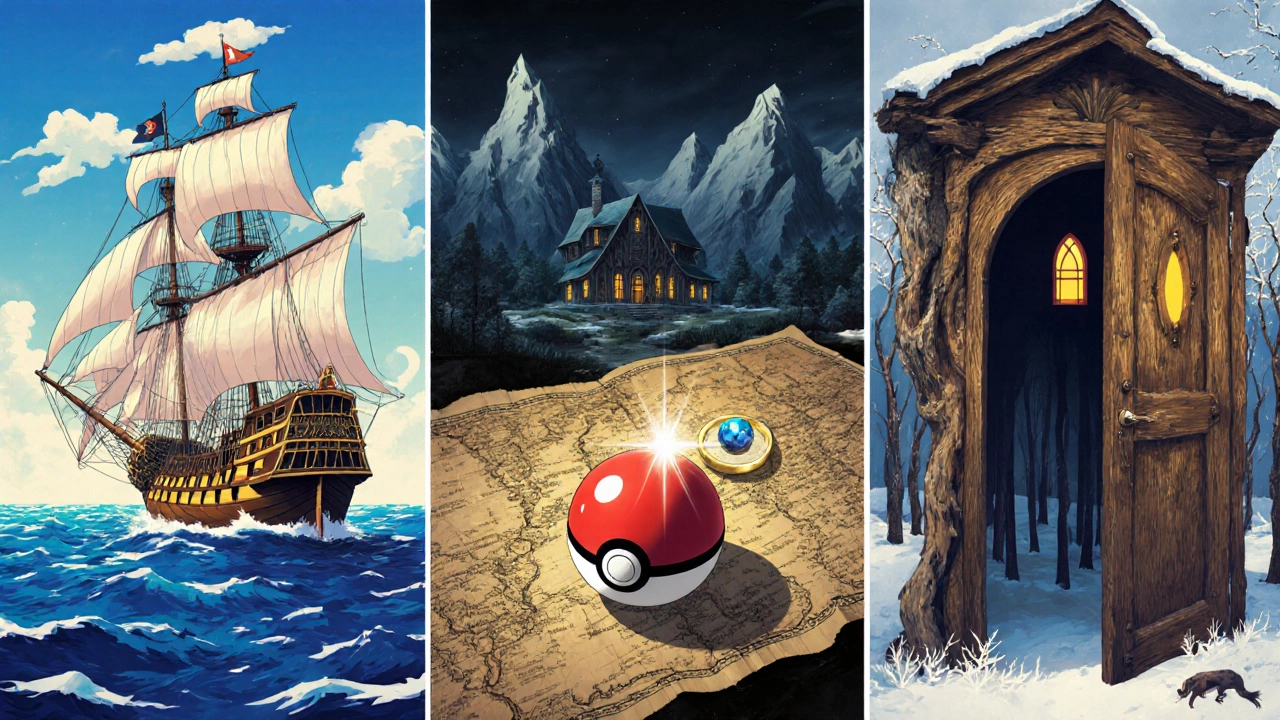What’s the Best‑Selling Book Series Ever?

Best-Selling Book Series Comparison Tool
70%
E-books
20%
Audiobooks
10%
United States
Harry Potter (120M)
United Kingdom
Lord of the Rings (30M)
Japan
One Piece (300M)
Latin America
Pokémon (25M)
Top Series Comparison Chart
| Series | Author(s) | Sales (Millions) | Format | First Publication |
|---|---|---|---|---|
| Harry Potter | J.K. Rowling | 600 | Print, E-book, Audiobook | 1997 |
| One Piece | Eiichiro Oda | 516 | Manga | 1997 |
| Goosebumps | R.L. Stine | 400 | Print, E-book | 1992 |
| The Lord of the Rings | J.R.R. Tolkien | 150 | Print, E-book, Audiobook | 1954 |
| Pokémon | Satoshi Tajiri & Ken Sugimori | 120 | Guidebooks, Cards | 1996 |
| Chronicles of Narnia | C.S. Lewis | 120 | Print, E-book | 1950 |
When you hear the phrase best-selling book series, most people instantly picture a wizard‑clad young hero, a scar, and a lightning‑bolt emblem. That image belongs to the Harry Potter series is a seven‑book fantasy saga written by J.K. Rowling that has sold over 600million copies worldwide. But the claim of "most sold" raises a lot of follow‑up questions: How are those numbers counted? Which other titles are close enough to challenge the crown? What makes a series explode across generations and continents? This guide walks you through the data, the rivals, and the forces behind the world’s top‑selling series.
Key Takeaways
- The Harry Potter series stays ahead with roughly 600million copies sold, making it the undisputed leader.
- Other heavyweight contenders include OnePiece, Pokémon, The Lord of the Rings, and Goosebumps, each topping 200million copies.
- sales numbers combine print, e‑book, and audiobook formats, and they are tracked by publishers, Nielsen BookScan, and industry analysts.
- Universal themes, multimedia franchise extensions, and aggressive global marketing drive the highest figures.
- Digital‑first releases and streaming adaptations continue to push legacy series into new sales brackets.
How Book‑Series Sales Are Measured
Before we crown a champion, it’s worth understanding where the numbers come from. Publishers report total units shipped to retailers; Nielsen BookScan (now part of NPD Book) captures point‑of‑sale data for major retailers in the U.S., U.K., and parts of Europe. For Asian markets, Oricon (Japan) and local publishing councils provide analogous data. E‑book sales are logged by platforms such as Amazon Kindle, Apple Books, and Kobo, while audiobook units are tracked by Audible and the Audio Publishers Association.
All‑format tallies usually add up the individual titles within a series, then round to the nearest ten‑million for public statements. Because no single database covers every corner of the globe, the figures you see in press releases are best‑estimate totals, but they’re close enough to rank series reliably.

The Reigning Champion: Harry Potter
J.K. Rowling’s wizarding world debuted in 1997 with Harry Potter and the Philosopher’s Stone. Over a decade, the seven books sold more than 600million copies, a milestone confirmed by the Bloomsbury Publishing announced that the series crossed the six‑hundred‑million mark in 2023. The breakdown looks roughly like this:
- Philosopher’s Stone - 120million
- Chamber of Secrets - 77million
- Prisoner of Azkaban - 65million
- Goblet of Fire - 55million
- Order of the Phoenix - 55million
- Half‑Blood Prince - 65million
- Deathly Hallows - 73million
Beyond raw copies, the series has generated a multi‑billion‑dollar franchise: films, theme parks, merchandise, and a wizarding‑world digital platform. Those ancillary revenues don’t count toward book‑sales totals, yet they reinforce the series’ cultural foothold, making each new edition (illustrated, anniversary) a repeat seller.
Close Runners‑Up: The Top Five Series by Copies Sold
| Series | Author(s) | Copies Sold (millions) | First Publication | Primary Genre |
|---|---|---|---|---|
| One Piece | Eiichiro Oda | 516 | 1997 | Pirate adventure (manga) |
| Pokémon | Satoshi Tajiri & Ken Sugimori | 120 | 1996 (books) | Fantasy/collectible |
| The Lord of the Rings | J.R.R. Tolkien | 150 | 1954 | Epic fantasy |
| Goosebumps | R.L. Stine | 400 | 1992 | Children’s horror |
| Chronicles of Narnia | C.S. Lewis | 120 | 1950 | Christian fantasy |
Each entry in the table has its own story. One Piece is a Japanese manga that started as a weekly newspaper strip; its tankōbon volumes now total over 516million copies, making it the highest‑selling manga series ever. Pokémon began as video games, but the paperback guidebooks and collectible cards have sold over 120million copies, thanks to constant media reinvention. The Lord of the Rings benefits from academic respect, film adaptations, and a dedicated fan base that keeps the paperback and illustrated editions moving. Goosebumps tapped into 1990s kids’ love for spooky, self‑contained stories, generating nearly half a billion copies across 62 titles. Finally, Chronicles of Narnia rides on loyalty from religious schools and literary curricula, sustaining steady sales for decades.
Why These Series Dominate the Market
Three common threads explain their runaway success:
- Universal appeal: Themes like good vs. evil, friendship, and adventure resonate across cultures. Whether you read a wizard’s diary in London or a pirate’s log in Tokyo, the core emotions feel familiar.
- Multimedia ecosystems: Film franchises, TV series, video games, and theme parks turn a book into a brand. Every new movie release spikes back‑catalog sales, as seen after the 2022 “Harry Potter” stage revival.
- Strategic publishing: Frequent re‑releases-deluxe illustrated editions, anniversary paperbacks, box sets-keep the titles on shelves. In China, for example, localized translations of Harry Potter were staggered over ten years, each wave adding fresh sales.
These forces also help series stay relevant in the digital age. The Audible platform reports that the Harry Potter audiobooks alone have amassed over 40million listens, contributing to overall unit counts that publishers now include in “copies sold” statements.

Sales by Format and Region
Print still accounts for roughly 70% of global book‑series sales, but e‑books have carved out a 20% share, especially in North America and Europe where Kindle and Apple Books dominate. Audiobooks, once a niche, now make up about 10% of the total, driven by commuters and smart‑speaker users.
Region‑specific highlights:
- United States: Harry Potter leads with 120million copies, followed closely by Goosebumps at 85million.
- United Kingdom: The Lord of the Rings remains a staple in school curricula, selling 30million copies locally.
- Japan: One Piece dominates manga charts; trade‑paperbacks alone have crossed 300million copies.
- Latin America: Pokémon books, translated into Spanish and Portuguese, have sold over 25million copies, boosted by the 2024 animated series reboot.
Looking Ahead: How New Platforms Could Shift the Rankings
While Harry Potter’s lead feels secure, the rise of subscription‑based reading services (e.g., Amazon Kindle Unlimited, Scribd) could blur the lines between “copies sold” and “readership”. Publishers are already negotiating revenue‑share models that count a certain number of reads as an equivalent unit. If that becomes industry standard, series with strong digital libraries-like the Chronicles of Narnia (now fully digitized) or the ever‑expanding One Piece volumes-might climb the rankings faster.
Moreover, AI‑generated story extensions are emerging. In 2025, a pilot project used AI to write a short spin‑off story set in the wizarding world, released as a free e‑book. While not counted as an official sale, the experiment hinted at new ways to monetize beloved universes without traditional printing costs.
Frequently Asked Questions
Which book series has sold the most copies worldwide?
The Harry Potter series is the top‑selling series, with over 600million copies sold across all formats.
How are sales figures for a series calculated?
Publishers combine print shipments, e‑book purchases, and audiobook units reported by retailers and digital platforms. Industry trackers like Nielsen BookScan, Oricon, and the Audio Publishers Association verify the numbers.
Is the manga series OnePiece considered a "book" series?
Yes. In publishing terms, collected manga volumes (tankōbon) are treated as books, so OnePiece’s sales are counted alongside traditional prose series.
Do movie adaptations affect book‑sales numbers?
They don’t directly add to the "copies sold" tally, but each new film typically triggers a sales spike for the source books, which is reflected in updated total figures.
Will digital‑only releases ever outrank print‑heavy series?
If subscription‑read counts become the new standard, series with extensive e‑book libraries could overtake some print‑dominant titles, but as of 2025 print still leads the total volume.
Whether you’re a casual reader, a librarian curating a collection, or a publisher scouting the next breakout franchise, understanding the numbers behind the world’s most‑sold series gives you a solid footing to spot trends, predict future hits, and appreciate why certain stories keep popping up on best‑seller shelves year after year.
